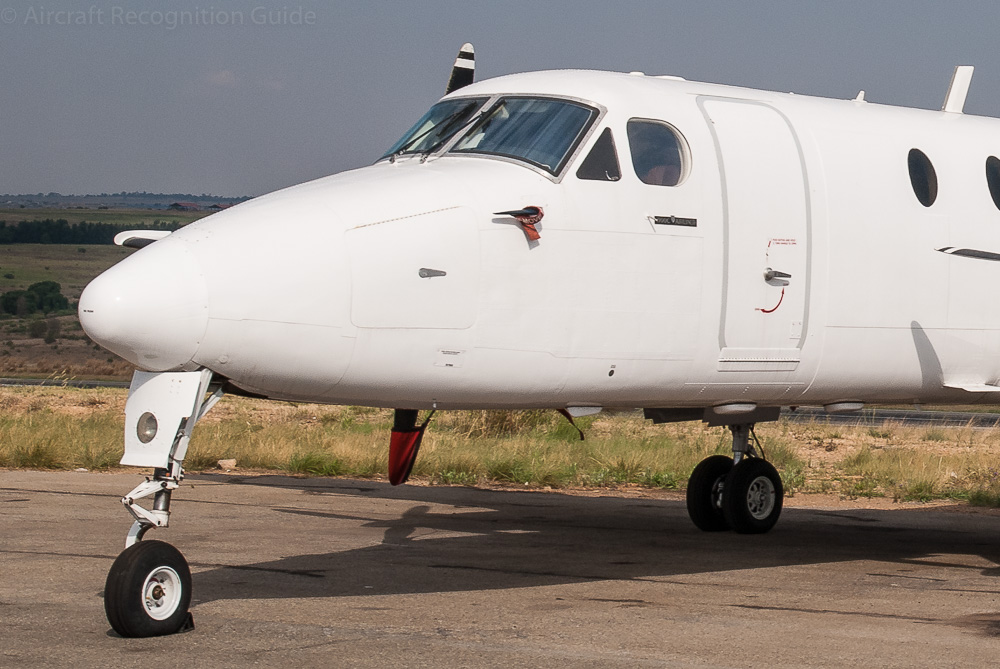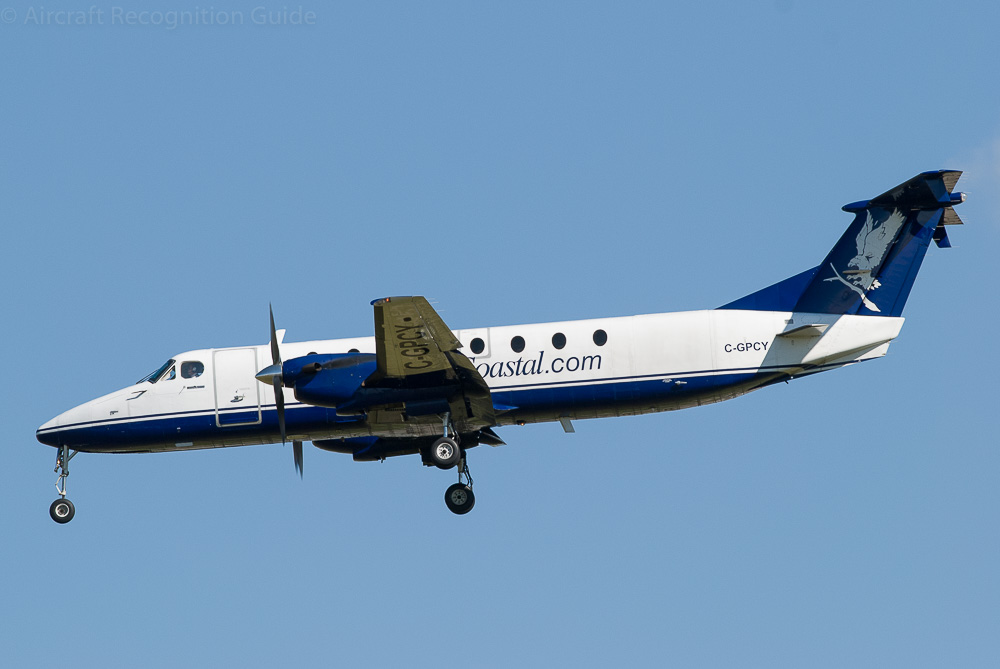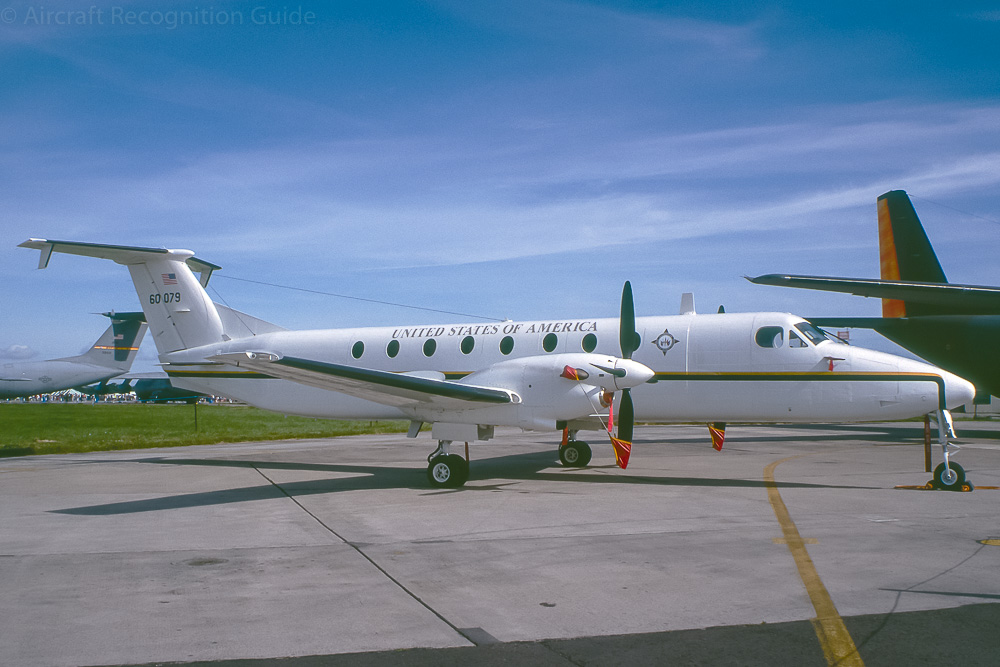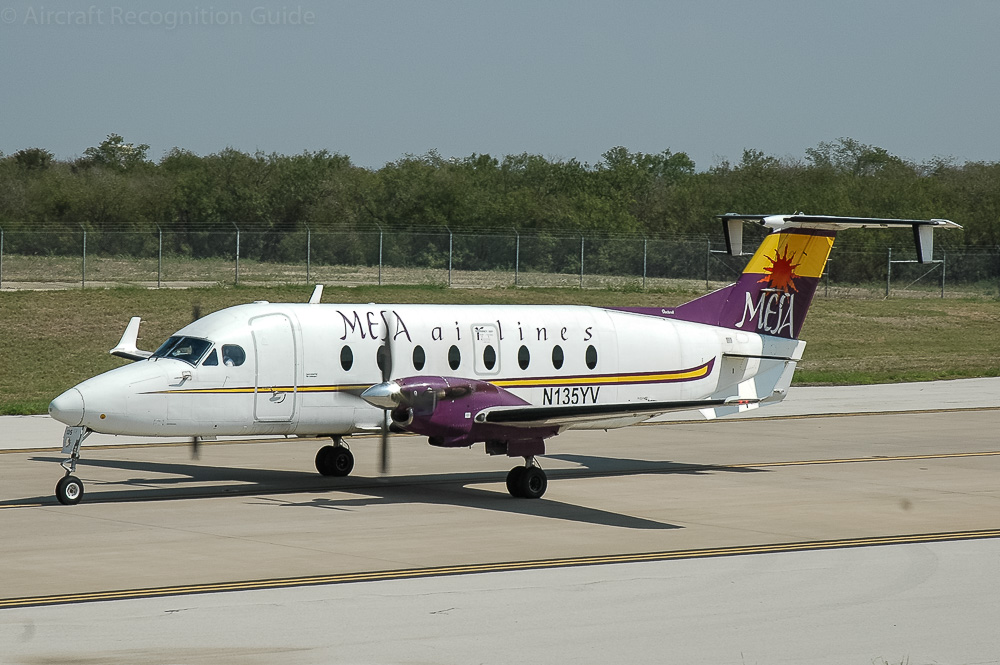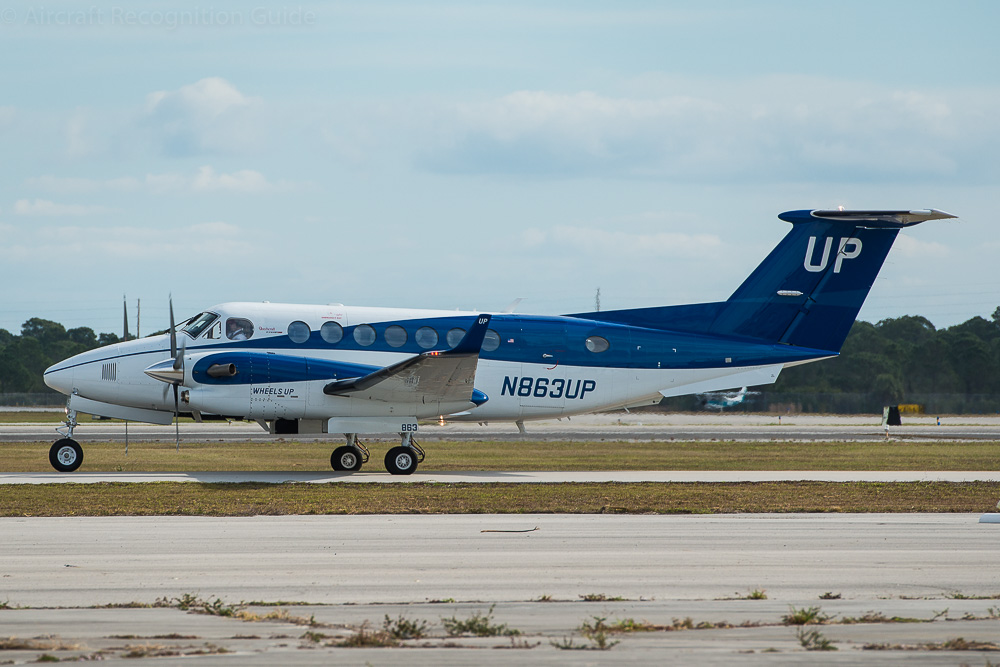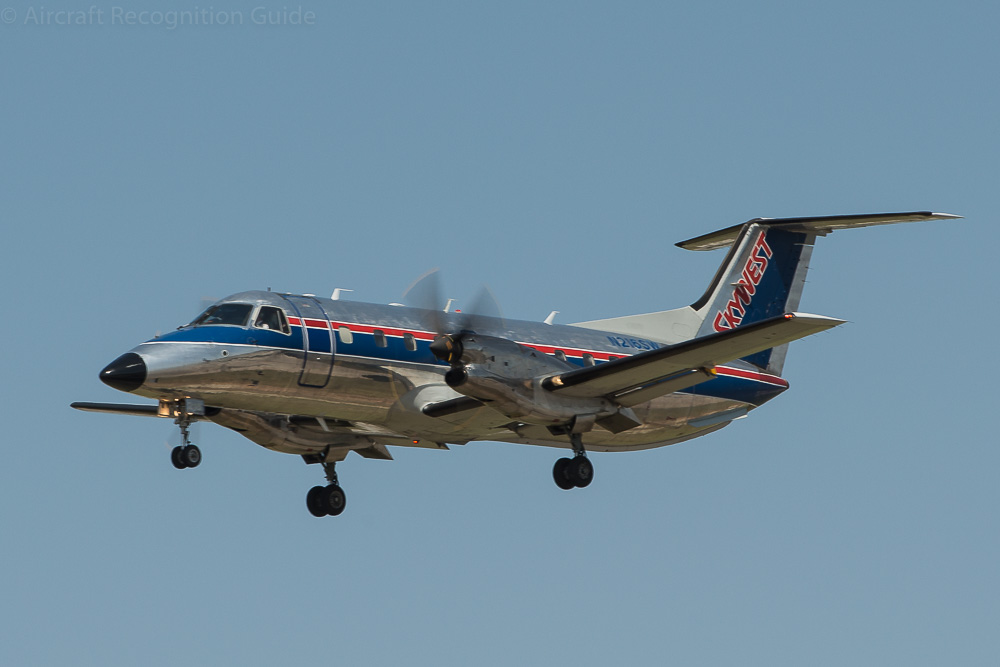
Beechcraft 1900
Beechcraft already had a small commuter aircraft, the Beech 99, but this has no pressurised cabin, making it difficult to compete with for example the Swearingen Metroliner. Therefore the company developed a new aircraft based on the King Air 200 series. Many elements may come familiar - sometimes in a slightly modified way - like the cockpit windows, engine nacelles, landing gear and T-tail. The Beech 1900 has oval cabin windows though, in a somewhat rectangular cross section fuselage. Additions, to increase stability, are fins extending down from the horizontal tail plane, horizontal fins attached to the rear fuselage and a larger dorsal fin.
The nose of the Beech 1900 is like that of the King Air 200, but with different nose gear doors. Also note the oval cabin windows.
The T-tail of the Beech 1900 has a bigger but shorter dorsal fin than the King Air 200. The extra stabilising fins are also typical for the aircraft. The arrows mark the key features of the 1900C model.
Different versions
The different versions of Beech 1900 can be distinguished by
- the number of airstair cabin doors on the left
- the presence of a large bagage/cargo door
- the high of the fuselage
- the size of the ventral fins
Beech 1900
No more than three examples of the original Beech 1900 were built. It has two airstair doors on the left side, at the front and rear of the fuselage. The rear door hinges at the bottom and has a higher placed door handle compared the the Beech 1900C below. Beechcraft soon learned that only the front would be sufficient for a nineteen seat aircraft and quickly changed production to the next version.
Only three Beech 1900s were built before production changed to the 1900C. Note the airstair door at the rear. (photo Erik Frikke)
Beech 1900C & 1900C-1
On the Beech 1900C the rear door was replaced by a large, wider door giving access to the bagage compartment. It is recognised by the longer hinge at the top and a lower door handle (see photo below the intro). For the rest it is the same as the original 1900. The 1900C has bladder fuel tanks in the wings, while the 1900C-1 has wet wing tanks, so without bladders. This is not visible on the outside though...
The corporate version of the 1900C was marketed as King Air ExecLiner.
The US Air Force acquired six 1900Cs that received designation C-12J, stressing the commonality with the C-12 Super King Air.
On the outside the only difference between the Beech 1900 and 1900C pictured here is the cargo door in the rear fuselage, in place of the second airstair door.
The United States Air Force has six Beech 1900Cs that are designated C-12J. They are like a regular 1900C on the outside, so only the paint scheme is a clue.
Beech 1900D
The most popular version of the Beech 1900 family is the 1900D. It has a raised roof, giving more head room for passengers moving around in the cabin. To counter the increased drag winglets were added to the wing tips, while two large ventral fins provide more stability.
In US military service the 1900D variant is designated as C-12J2.
From this angle you can better see that the fuselage cross section of the Beech 1900D is higher than it is wide.
Confusion possible with
Beechcraft 350
The Beech 1900 at first looks like a strecthed Super King Air. Indeed both types share the typical King Air cockpit windows, and to a large extent also the wings, engine nacelles and tail. However, apart from the length you can recognise a Beech 350 by the round cabin windows.
Embraer EMB120 Brasilia
Embraer's Brasilia has the same basic configuration as the Beech 1900, but is bigger and with a round fuselage. Additionally it has four curved cockpit windows, two wheels on the nose gear and no stabilising fins on the tail.

